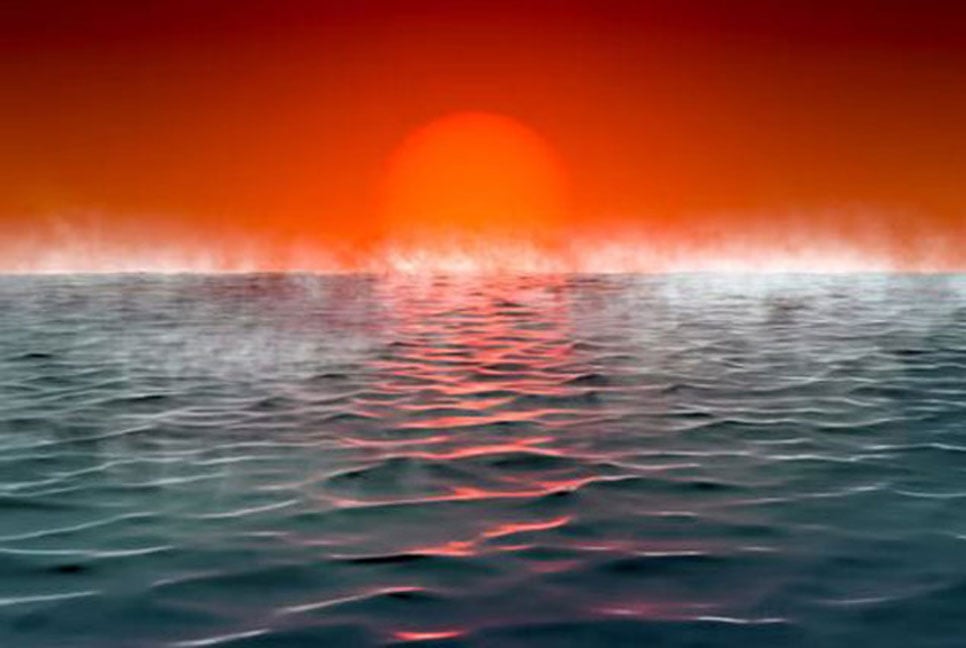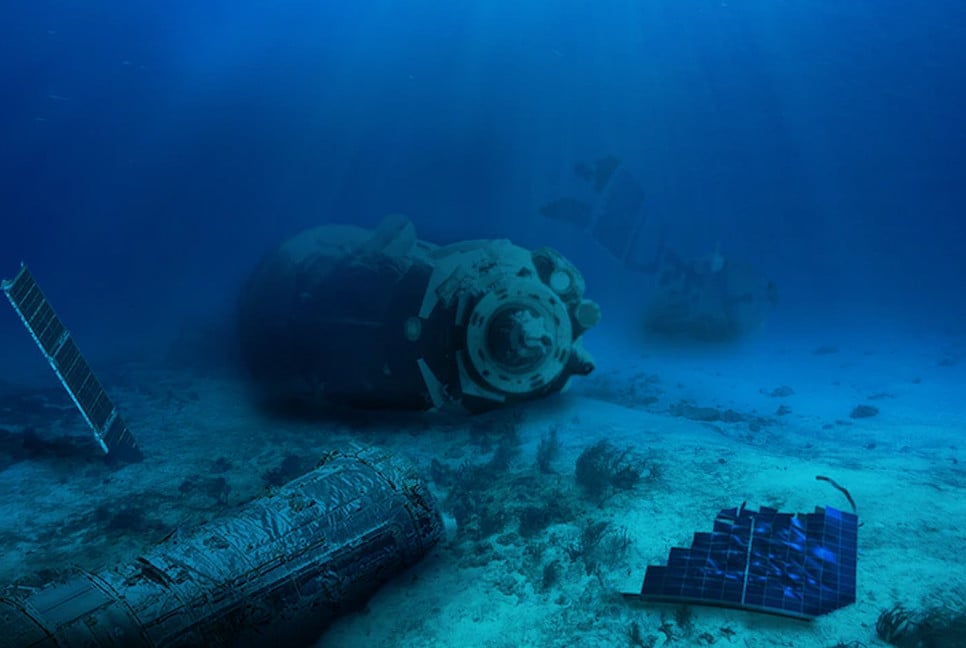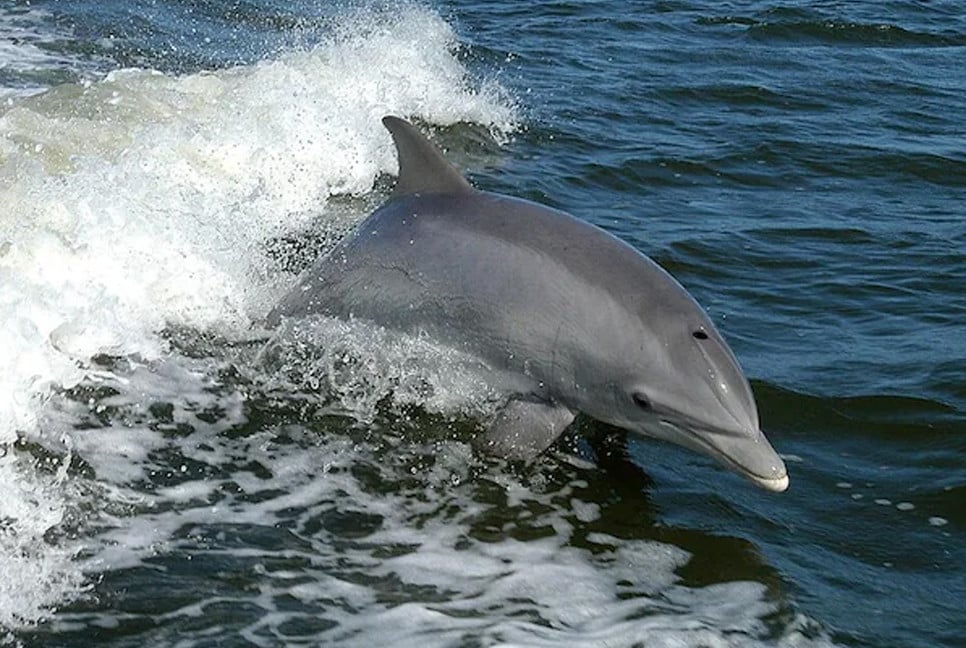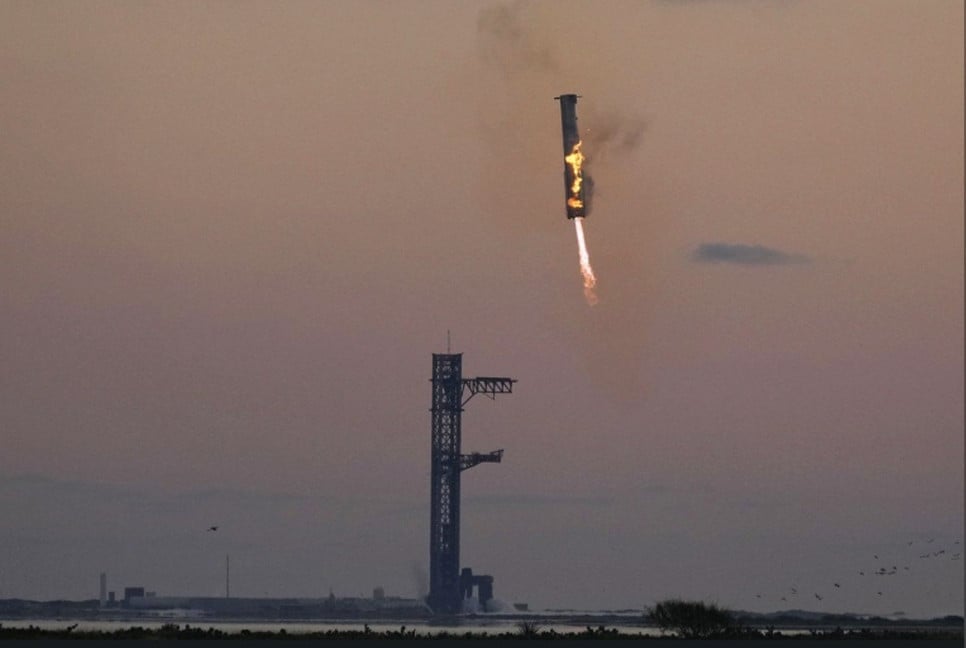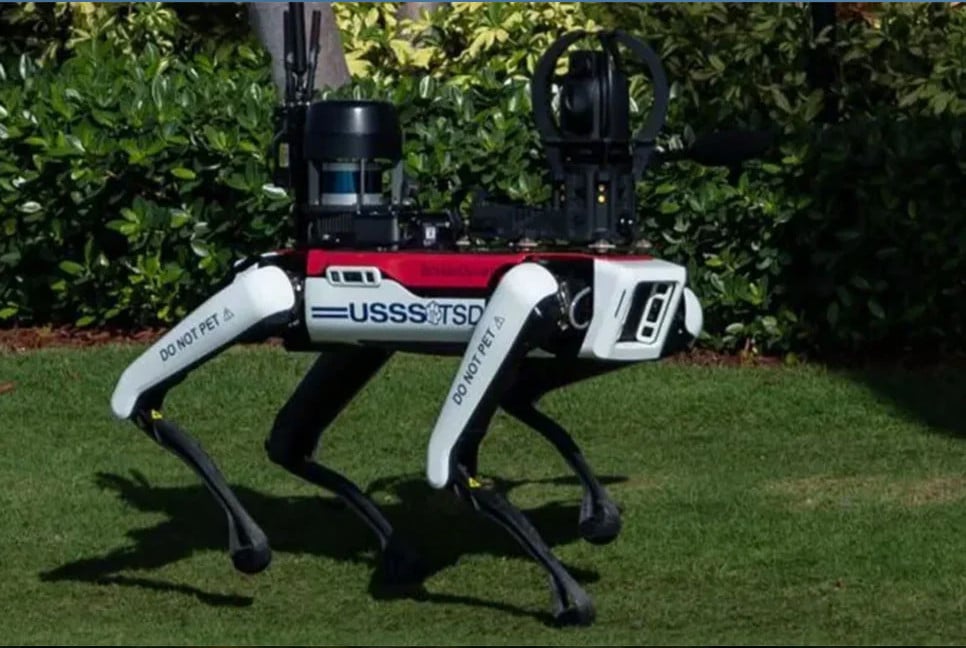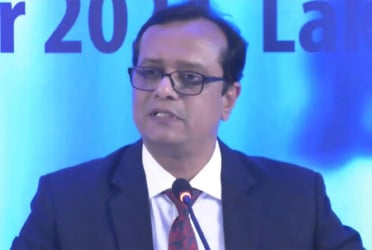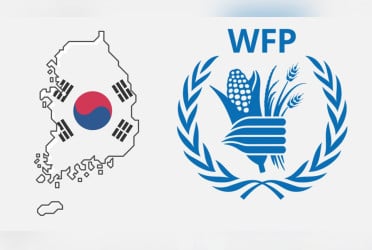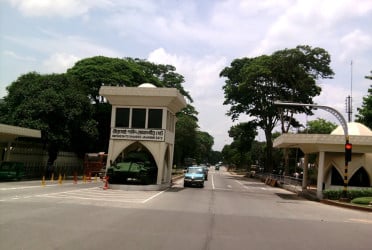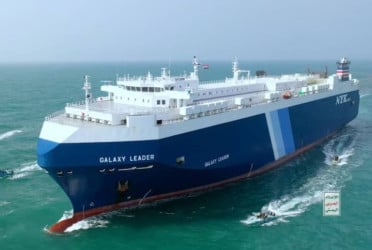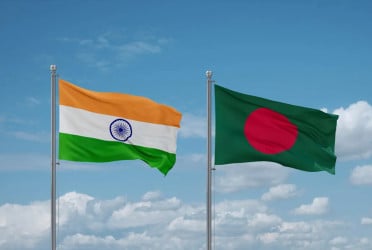Astronomers have observed a distant planet that could be entirely covered in a deep water ocean, in findings that advance the search for habitable conditions beyond Earth.
The observations, by Nasa’s James Webb space telescope (JWST), revealed water vapour and chemical signatures of methane and carbon dioxide in the atmosphere of the exoplanet, which is twice Earth’s radius and about 70 light years away, reports The Guardian.
This chemical mix is consistent with a water world where the ocean would span the entire surface, and a hydrogen-rich atmosphere, according to researchers from the University of Cambridge, although they do not envisage a balmy, inviting seascape.
“The ocean could be upwards of 100 degrees [Celsius] or more,” said Prof Nikku Madhusudhan, who led the analysis. At high atmospheric pressure, an ocean this hot could still be liquid, “but it’s not clear if it would be habitable,” he added.
This interpretation is favoured in a paper published in the journal Astronomy and Astrophysics Letters, but is disputed by a Canadian team that made additional observations of the same exoplanet, which is known as TOI-270 d. They detected the same atmospheric chemicals but argue the planet would be too hot for liquid water – possibly 4,000C – and instead would feature a rocky surface topped by an incredibly dense atmosphere of hydrogen and water vapour.
Whichever view wins out, these latest observations showcase the stunning insights James Webb is giving into the nature of planets beyond our solar system. The telescope captures the starlight that has been filtered through the atmospheres of orbiting planets to give detailed breakdowns of the chemical elements present. From this, astronomers can build up a picture of conditions at a planet’s surface – and the likelihood of life being able to survive there.
The evidence for TOI-270 d’s ocean is based on the absence of ammonia, which basic chemistry predicts should occur naturally in a hydrogen-rich atmosphere. But ammonia is highly soluble in water and so would be depleted in the atmosphere if there were an ocean down below. “One interpretation is that this is a so-called ‘hycean’ world – with a water ocean under a hydrogen-rich atmosphere,” said Madhusudhan.
Conditions would be very different from those on Earth. TOI-270 d is tidally locked, meaning one side permanently faces its star and the other is bathed in eternal darkness, creating an extreme temperature contrast.
Bd-pratidin English/Lutful Hoque

